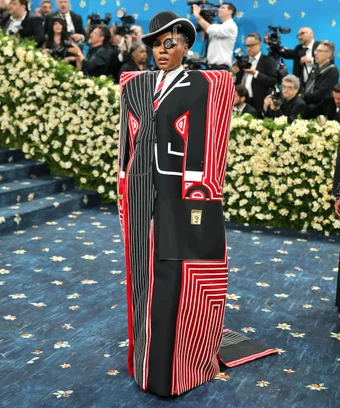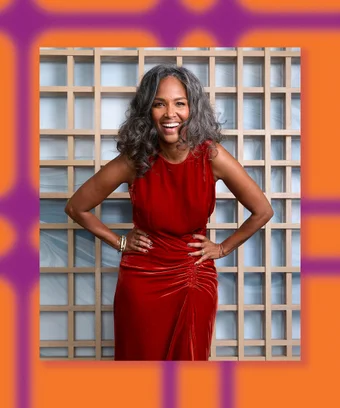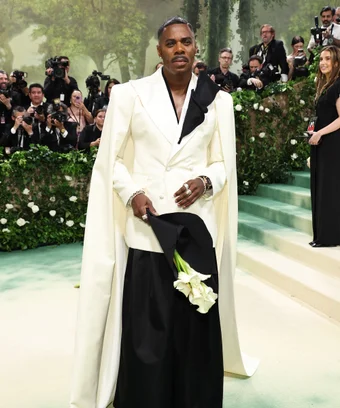The 2025 Met Gala didn’t just celebrate Black fashion—it embodied it. For the first time in its storied history, the Costume Institute dedicated its theme to “Superfine: Tailoring Black Style,” a glorious exploration of Black dandyism as revolution, resistance, and unapologetic pride. And in a moment when Black creativity is both exalted and under siege, the timing couldn’t have been more poetic.
The navy-blue carpet was a visual feast—capes, canes, fascinators, and impeccably tailored suits declared that Black elegance has always been its own kind of rebellion. There were no protest pins needed; the message was in the mere presence of Black stars, designers, and curators who carried the legacy of those who came before them.
The Looks That Stole the Night
- Colman Domingo, co-chair of the evening, arrived in a regal blue cape with an embellished collar, channeling both choir director and monarch—a subtle tribute to the late André Leon Talley. Underneath? A flawless Valentino suit.
- Diana Ross commanded attention in an 18-foot cape embroidered with the names of her children and grandchildren, proving that legacy is the ultimate accessory.
- Ayo Edebiri honored her Nigerian roots in a Ferragamo dress inspired by her father and traditional Edo fashion.
- Rihanna, ever the showstopper, announced her third pregnancy while serving a look so fierce it felt like the night’s exclamation point.
- André 3000 carried a literal piano on his back, reminding us that Black dandyism defies all limits.
- Doechii, in Louis Vuitton, proved that a dark-skinned girl from the swamp who chooses freedom over conformity can become fashion’s newest muse.
- Janelle Monáe stunned in a two-in-one Thom Browne suit—structured, surreal, and utterly her.
Even the red carpet interviews were a masterclass in Black excellence. Teyana Taylor (styled by Ruth E. Carter) and Ego Nwodim (in a sleek Christopher John Rogers three-piece) brought humor, warmth, and effortless cool to their hosting duties—the way only Black women can.
Why This Theme Matters Now More Than Ever
The night opened with a choir of Black men in tuxedos singing Ain’t No Mountain High Enough—a song that’s both a love letter and a battle cry. Because Black dandyism has always been about defying limitations, whether imposed by slavery, segregation, or modern-day respectability politics.
As designer Law Roach quipped at Vogue’s pre-Gala party: “They done f**ed up and made the Met Ball Black.”* And indeed, they did.
But the significance of this moment extends beyond one glamorous night. In an era where DEI initiatives are being dismantled and Black creativity is often appropriated but rarely uplifted, this exhibition—and this Gala—felt like a reclamation.
The Exhibition: A Love Letter to Black Craftsmanship
The accompanying exhibition, opening to the public May 10, is a visual manifesto. Curated by Monica L. Miller (author of Slave to Fashion: Black Dandyism and the Styling of Black Diasporic Identity), it traces how enslaved Black people transformed clothing into a tool of resistance and self-determination.
One of the most striking details? The mannequins are placed on pedestals, forcing viewers to look up—because the people who wore these clothes were, and are, larger than life.
“This is a display of the creativity and imagination of Black people across centuries,” Miller told Unbothered. “I hope people walk away understanding the craftsmanship, care, and history behind these looks.”
Dandyism Is in Our DNA
For some, “dandyism” might sound like an antiquated term. But for Black folks, it’s in our blood. It’s the epigenetic gene that makes us resilient, innovative, and unshakably fly. It’s the reason our ancestors turned hand-me-downs into high fashion, why Sunday best is a sacred tradition, and why “dripped out” isn’t just a phrase—it’s a birthright.
This Met Gala wasn’t just a celebration. It was a reminder: No matter how hard the world tries to diminish us, we will always dress—and rise—above it.




